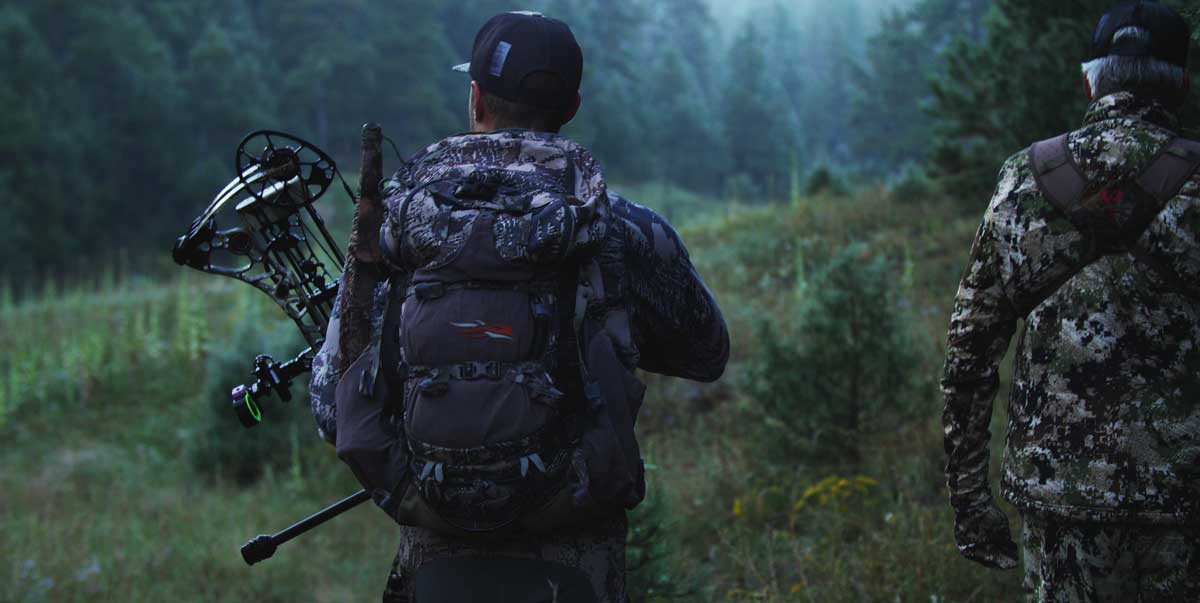Haulin’ elk ain’t easy, but it’s not impossible.
Most often archery elk are killed in warm weather, and time is crucial to avoid meat spoilage or damage from blowflies and meat-eating insects. Bowhunters need to be prepared to either line up an outfitter or packer with horses or mules or enlist the help of a weak-minded and strong-backed buddy or two. To do the latter, you need a proper pack.
Most hunting backpacks are not meant for super-heavy loads. When it comes to grunting out meat, you need a large, strong and simple setup.
My tried-and-true Freighter pack was the forerunner to even better packs sold today. The Cabela’s Extreme Alaskan Outfitter Frame Pack is typical. This design has a bomb-proof frame of welded aluminum that can handle more weight than you could ever lift. The top bar is removable to lower your packing profile through heavy brush and trees. The accompanying pack sack is heavy-duty ripstop nylon—also designed to withstand extreme loads. Removable side and top pockets let you carry a knife, bone saw, hoist rope, flashlight and other accessories, or let you strip down your pack to a single, lighter-weight pouch to stuff full of meat.
No matter whose heavy-load pack you buy, in addition to insisting on a strong welded frame and heavy nylon sack, look for a load-holding capacity of 4,000 cubic inches or more. The pack should have heavy-duty and fully adjustable shoulder straps that are wide and padded to spread carrying weight across your upper body. These straps must have an integral “brisket strap” that pulls the two shoulder straps snugly toward your neck. This prevents chafing caused by straps that slip and slide horizontally across the shoulders. A brisket strap also spreads out the weight and prevents a shoulder strap from sliding completely off as you negotiate uneven ground or trip and fall.
Hip belt design can make or break the comfort of a heavy-load pack. The belt must be wide and thickly padded, yet rigid enough to grip your waist when you cinch it tight. For safe and secure meat packing, and a lower and more stable center of gravity as you move, 75 percent of the packing load should rest on your hips instead of your shoulders.
A pack like the one just described can perform double duty for multi-day jaunts into remote, bivouac elk camps. Like many other packs, a well-designed freighter pack like the Cabela’s pack has a removable sling that lets you carry your bow across the back of the pack.
But for single-day hunting, a smaller and lighter-weight model is best. You should never strap on a pack larger than you really need.
In addition to a knife and diamond hone to touch up the edge, my day pack is usually stuffed to the top with other items. These included a GPS for navigating heavy fog or thick timber, fluorescent orange surveyor’s tape to mark a blood trail or kill site, 20 feet of nylon rope, bone saw, flashlight with extra batteries, binocular cleaning tissue, waterproof matches and a couple of cow elk calls. In addition, I pack a light lunch, wool gloves and extra stocking cap, two scent-free hand warmers and a quart of water. If the weather is threatening, I add a lightweight raingear and a warm coat.
The only practical way to carry this gear is in a fanny pack or shoulder pack. But not just any old pack will do for archery hunting.
The first, most important trait of any good hunting day pack is silence. Your pack should be made of strong, soft-surfaced fabric like traditional polyester fleece. To noise-test a pack before you buy, simply drag your fingernails across the surface. If you can hear more than a whisper of noise, it will not work for hunting elk.
No matter what your day pack, it should also be camouflaged to help you blend with the woods. Any time-tested, medium-color pattern will do. As a bowhunter, you should avoid solid-colored packs that might catch an elk’s eye as you move.
For day hunting in pleasant weather, I prefer a medium-sized fanny pack with a wide, comfortable hip belt. But the need for bad-weather clothing will increase the size of the pack I carry. Raingear, jacket, hand warmers, gloves or mittens and a warm cap require more storage capacity. That means a bigger fanny pack or a full-blown backpack with shoulder straps, hip belt and brisket strap.
No matter how you prefer to tote your bow and other elk gear, a pack must ride no higher than your shoulders and no wider than your waist. This will place it completely behind you and out of the way. An overly high or wide pack can be a brush-snagging, potentially noisy liability in elk country.
A serious bowhunter should own one, two or maybe even three pack designs for specific applications. If you shop carefully, you will end up with strong, quiet and comfortable models that meet your personal elk hunting needs.
RMEF Life Member Chuck Adams has written 10 books about bowhunting – including Super Slam, detailing his adventures with all 28 species of North American big game.
